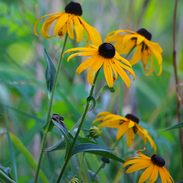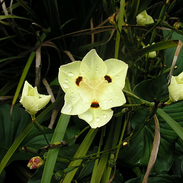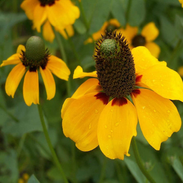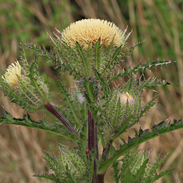
The Indian Blanket ( Gaillardia pulchella ), with its vibrant red and yellow blossoms resembling a colorful tapestry, is a cheerful wildflower native to North America. Beyond its striking beauty, this plant holds a history of medicinal use, particularly among Native American tribes who revered it for its healing properties. Let's explore the potential benefits woven into this vibrant flower.
Traditional Uses:
Skin Soother: Indian Blanket was traditionally used to treat various skin ailments, including burns, sores, rashes, and insect bites. The flowers and leaves were often made into poultices or infusions for topical application.
Gastrointestinal Aid: Some tribes used the roots of the Indian Blanket to address digestive issues such as diarrhea, stomach aches, and gastroenteritis.
Eye Health: The plant was also used as an eyewash to soothe sore or irritated eyes.
Women's Health: Traditionally, Indian Blanket was used to ease menstrual cramps and help with other gynecological concerns.
Pain Relief: Some tribes employed the plant to alleviate pain, including headaches and toothaches.
Potential Properties & Modern Research:
While scientific research specifically on Indian Blanket is still limited, its traditional uses and some preliminary findings suggest potential areas for further investigation:
Anti-inflammatory: It's possible that Indian Blanket possesses anti-inflammatory properties, which could contribute to its use for skin conditions, pain relief, and eye health.
Antioxidant Potential: Like many plants, it likely contains antioxidants, which can help protect cells from damage and contribute to overall health.
Antimicrobial Properties: While not extensively studied, it's possible that Indian Blanket has antimicrobial activity, supporting its potential use for skin infections and other ailments.
Cautions and Considerations:
Limited Research: It's crucial to remember that research on the medicinal properties of Indian Blanket is still limited, and its safety and efficacy haven't been fully established.
Allergies: As with any plant, some individuals may be allergic to Indian Blanket, particularly those with allergies to other members of the Asteraceae family (like ragweed and daisies).
Pregnancy and Breastfeeding: Pregnant and breastfeeding women should avoid using Indian Blanket medicinally due to a lack of safety data.
Sustainable Harvesting: If you plan to wildcraft Indian Blanket, ensure you do so sustainably and with respect for the environment.
The Future of Indian Blanket:
With its potential anti-inflammatory, antioxidant, and antimicrobial properties, Indian Blanket holds promise for future research. Further scientific investigation is needed to fully understand its therapeutic potential, identify active compounds, and develop safe and effective applications.
Disclaimer: This blog post is for informational purposes only and should not be considered medical advice. Always consult with a qualified healthcare professional before using any herbal remedies.













Nice! I've never heard of Indian Blanket but I'll be on the lookout for it.